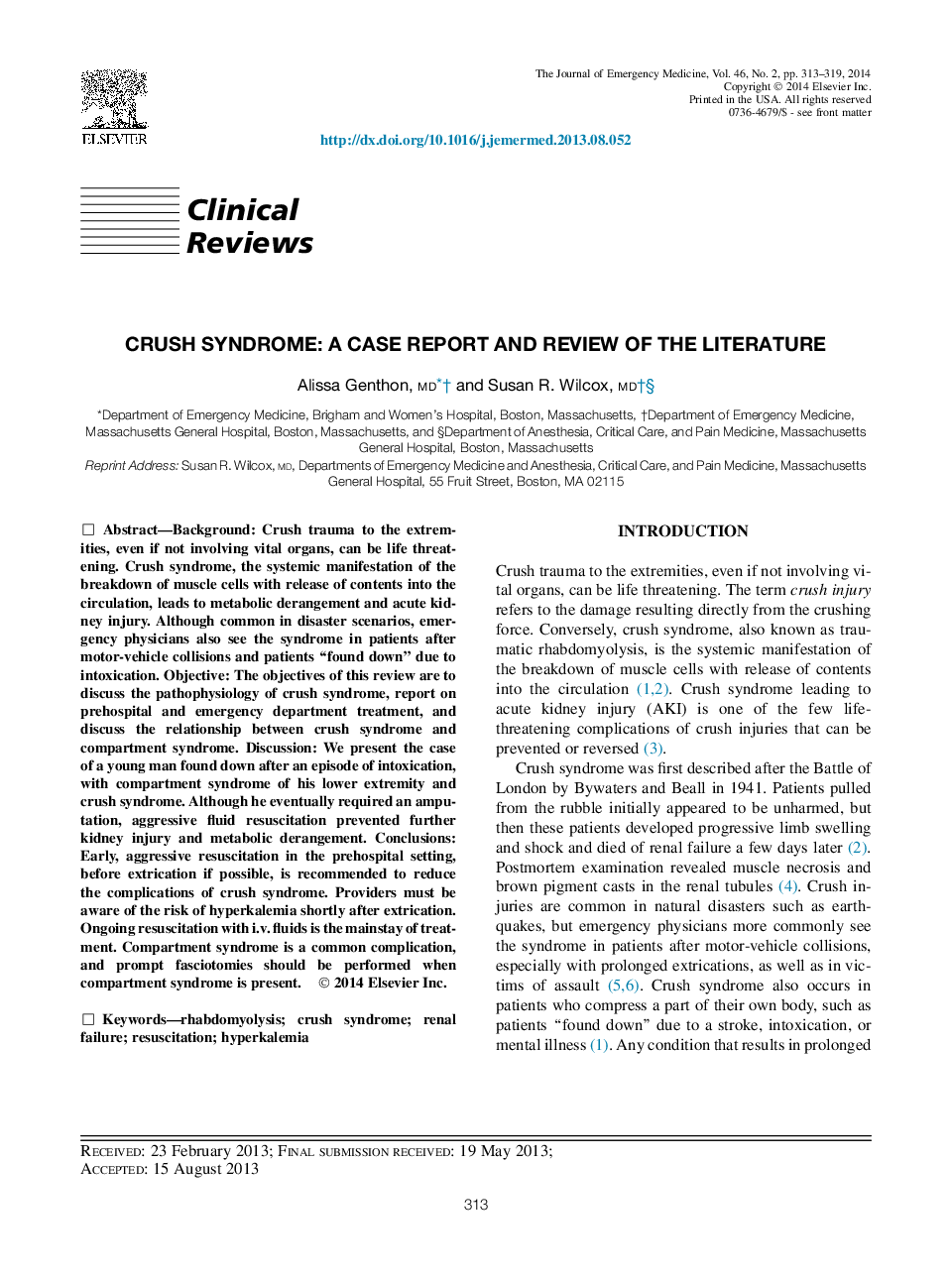| Article ID | Journal | Published Year | Pages | File Type |
|---|---|---|---|---|
| 3248019 | The Journal of Emergency Medicine | 2014 | 7 Pages |
BackgroundCrush trauma to the extremities, even if not involving vital organs, can be life threatening. Crush syndrome, the systemic manifestation of the breakdown of muscle cells with release of contents into the circulation, leads to metabolic derangement and acute kidney injury. Although common in disaster scenarios, emergency physicians also see the syndrome in patients after motor-vehicle collisions and patients “found down” due to intoxication.ObjectiveThe objectives of this review are to discuss the pathophysiology of crush syndrome, report on prehospital and emergency department treatment, and discuss the relationship between crush syndrome and compartment syndrome.DiscussionWe present the case of a young man found down after an episode of intoxication, with compartment syndrome of his lower extremity and crush syndrome. Although he eventually required an amputation, aggressive fluid resuscitation prevented further kidney injury and metabolic derangement.ConclusionsEarly, aggressive resuscitation in the prehospital setting, before extrication if possible, is recommended to reduce the complications of crush syndrome. Providers must be aware of the risk of hyperkalemia shortly after extrication. Ongoing resuscitation with i.v. fluids is the mainstay of treatment. Compartment syndrome is a common complication, and prompt fasciotomies should be performed when compartment syndrome is present.
